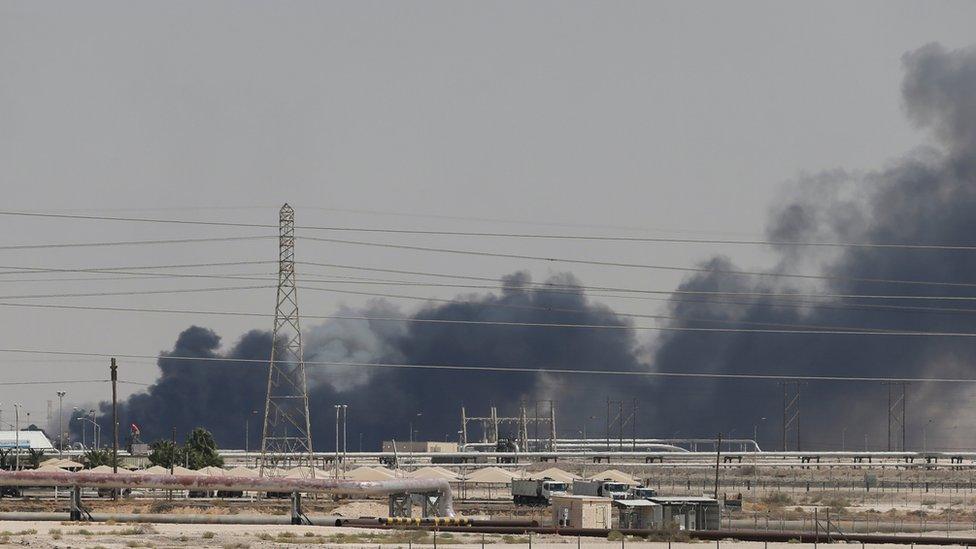Saudi oil attacks: US says intelligence shows Iran involved
- Published

One of the US government's satellite images showing apparent damage at the world's biggest oil-processing facility
The United States has issued satellite images and cited intelligence to back its allegation Iran was behind attacks on major Saudi oil facilities.
Iran denies involvement in Saturday's air attacks, which were claimed by Iran-aligned Houthi rebels in Yemen.
But unnamed US officials speaking to US and international media say the direction and extent of the attacks cast doubt on Houthi involvement.
The incident has cut global oil supplies by 5% and prices have soared.
What is the US saying?
Secretary of State Mike Pompeo blamed Iran at the weekend, without providing any evidence, prompting Tehran to accuse Washington of deceit.
Tweeting on Sunday, President Donald Trump stopped short of directly accusing Iran, but suggested possible military action once the perpetrator was known.
Allow X content?
This article contains content provided by X. We ask for your permission before anything is loaded, as they may be using cookies and other technologies. You may want to read X’s cookie policy, external and privacy policy, external before accepting. To view this content choose ‘accept and continue’.

Unnamed US officials have been speaking to the New York Times, ABC and Reuters.
One official said there were 19 points of impact on the targets and the attacks had come from a west-north-west direction - not Houthi-controlled territory in Yemen, which lies to the south-west of the Saudi oil facilities.

The officials said that could suggest launch sites in the northern Gulf, Iran or Iraq.
A Saudi-led coalition fighting in Yemen has accused Iran of providing the weapons.
A close-up image of damaged tanks at the Abqaiq processing plant (included above) appeared to show impact points on the western side.
Other images seem to show damage at the Khurais oilfield, which is located further west.
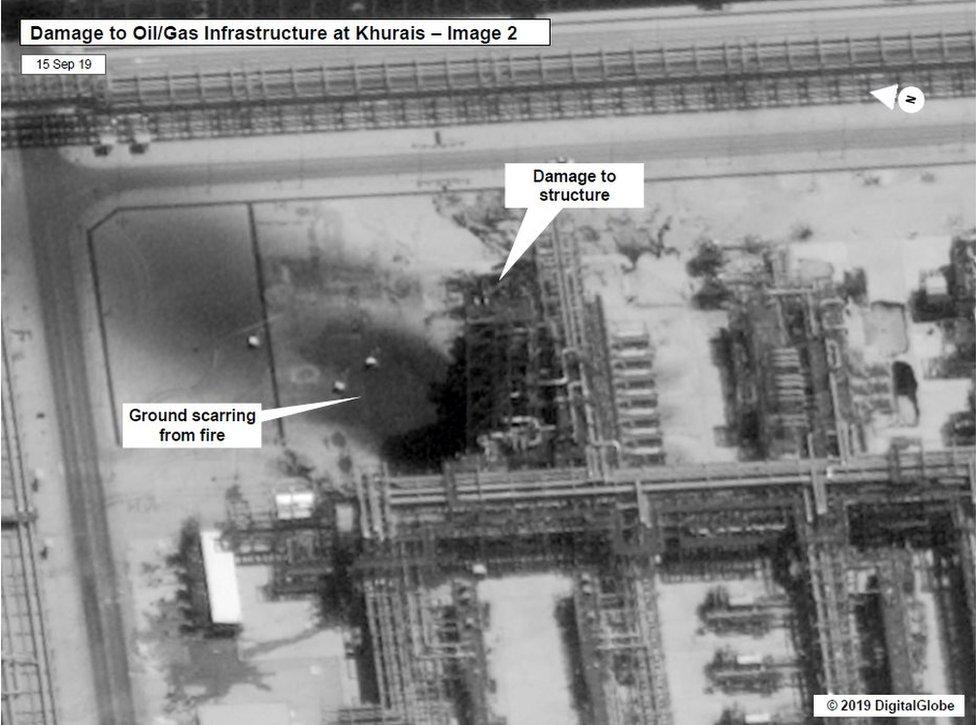
Iraq denied at the weekend that the attacks were launched from its territory. Prime Minister Adel Abdul Mahdi said Mr Pompeo had assured him in a phone call on Monday that the US backed Iraq's position.
Officials quoted by the New York Times said a mix of drones and cruise missiles, external might have been deployed, but that not all had hit their targets at Abqaiq and Khurais.
China and the European Union have, separately, urged restraint.
UN Yemen envoy Martin Griffiths told the Security Council on Monday it was "not entirely clear" who was behind the strike but he said it had increased the chances of a regional conflict.
In the UK, Foreign Secretary Dominic Raab also said it was not yet clear who was responsible, but called the act a "wanton violation of international law".
What are the oil markets doing?
The oil price has seen the biggest one-day rise since the 1991 Gulf War, rising 20% but falling back later.
The international benchmark used by traders, Brent crude, jumped to $71.95 (£57.53) a barrel at one point.
Prices eased after President Trump authorised a possible release of US reserves.
US Energy Secretary Rick Perry told business channel CNBC that it was too early to tell if this would be necessary, external. He also blamed Iran for the attack.
There are concerns that higher prices could continue if tensions worsen further.
Earlier Mr Perry insisted the oil market "is resilient and will respond positively".
How has Iran reacted?
Iranian Foreign Minister Javad Zarif tweeted on Sunday to deride Mr Pompeo, external, saying that "having failed at max pressure, Sec Pompeo's turning to max deceit".
Abqaiq has the world's largest oil processing plant
He was referring to the Trump administration's stated "maximum pressure campaign", which has targeted Iran with sanctions since Washington pulled out of an international agreement to limit the scope of Iran's nuclear programme.
How did Saturday's attacks unfold?
The attacks targeted Abqaiq, the site of the world's largest oil processing plant, run by the Saudi state oil company, Aramco, and the Khurais oilfield.
Khurais is the closest of the targets to the Yemen border - still a considerable 770km (480 miles) away.
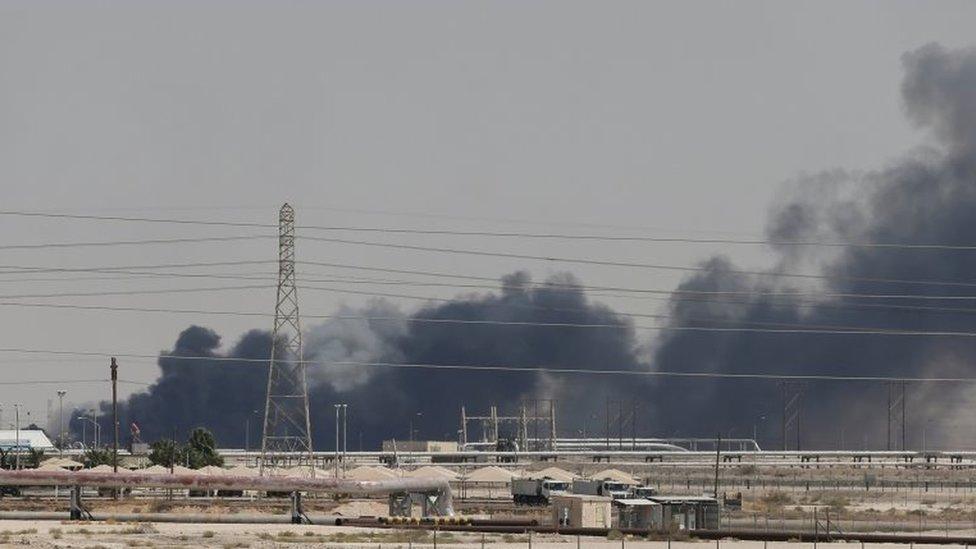
Smoke billowing from the oil facility in Abqaiq
Saudi Arabia said drones had carried out the attacks, which began at 04:00 (01:00 GMT) and sent huge clouds of thick, black smoke into the air.
The Houthi movement said its forces had sent 10 drones towards the facilities and have since warned of further attacks.
There were no reports of injuries, but the extent of the damage to the facilities is still not entirely clear.

Why Saudi Arabia and Iran are bitter rivals

Saudi Arabia and Iran are locked in a fierce struggle for regional dominance.
The decades-old feud is exacerbated by religious differences. They each follow one of the two main branches of Islam - Iran is largely Shia Muslim, while Saudi Arabia sees itself as the leading Sunni Muslim power.
The two countries are not directly fighting but they are engaged in a variety of proxy wars (conflicts where they support rival sides and militias) around the region.
Saudi Arabia is fighting against the rebel Houthi movement in neighbouring Yemen, in part to stem perceived Iranian influence there.
Iran has denied accusations that it is supporting the Houthis militarily, though successive reports from a panel of UN experts have demonstrated significant assistance for the Houthis from Tehran in terms of both technology and weaponry.

Why might the Houthis have attacked Saudi Arabia?
The Houthis have repeatedly launched rockets, missiles and drones at populated areas in Saudi Arabia. The attacks have left at least four civilians dead.
The Yemen conflict escalated in March 2015, when the Houthis seized control of much of the west of the country and forced President Abdrabbuh Mansour Hadi to flee abroad.
Saudi Arabia and allies then began an air campaign aimed at restoring Mr Hadi's government.
The UN says the conflict has claimed the lives of at least 7,290 civilians and left 80% of the population - 24 million people - in need of humanitarian assistance or protection, including 10 million who rely on food aid to survive.


- Published15 September 2019
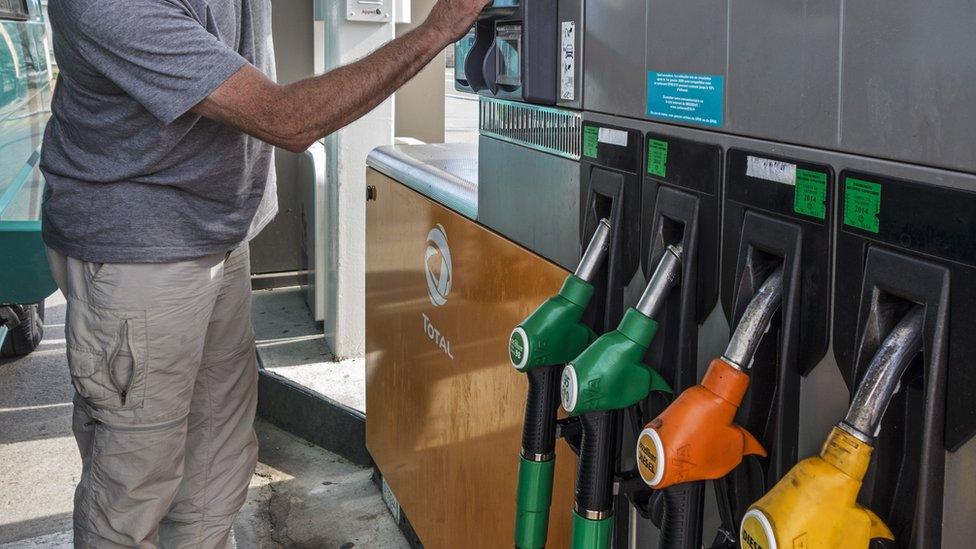
- Published16 September 2019

- Published13 June 2018
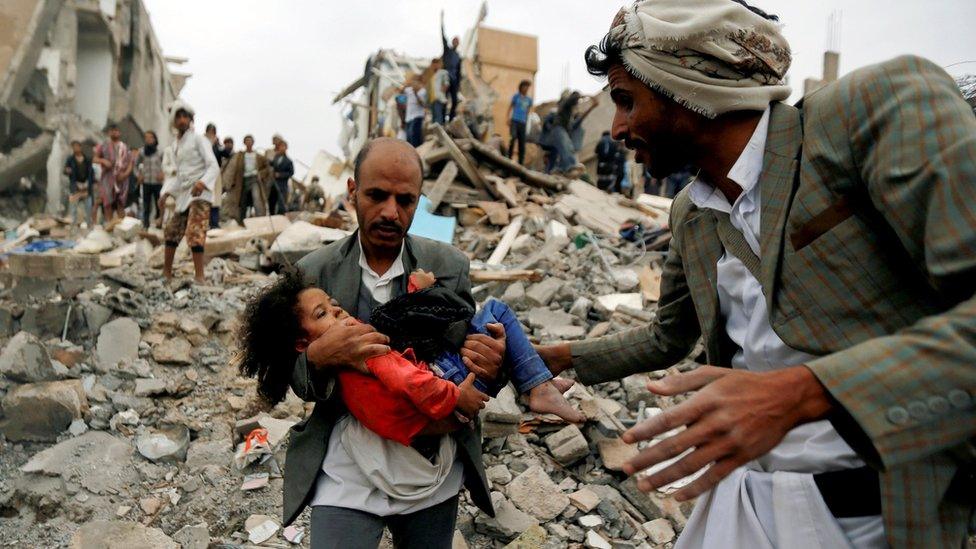
- Published16 September 2019
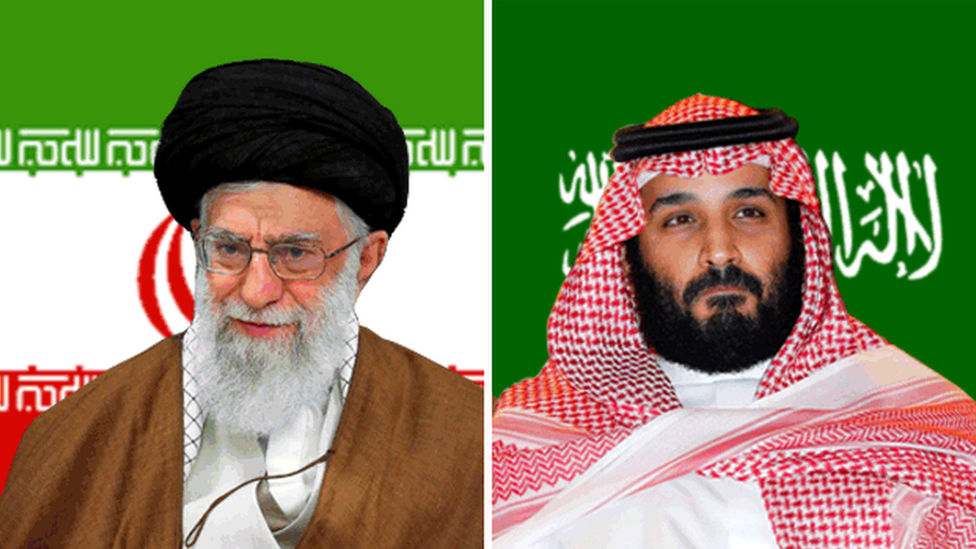
- Published16 September 2019
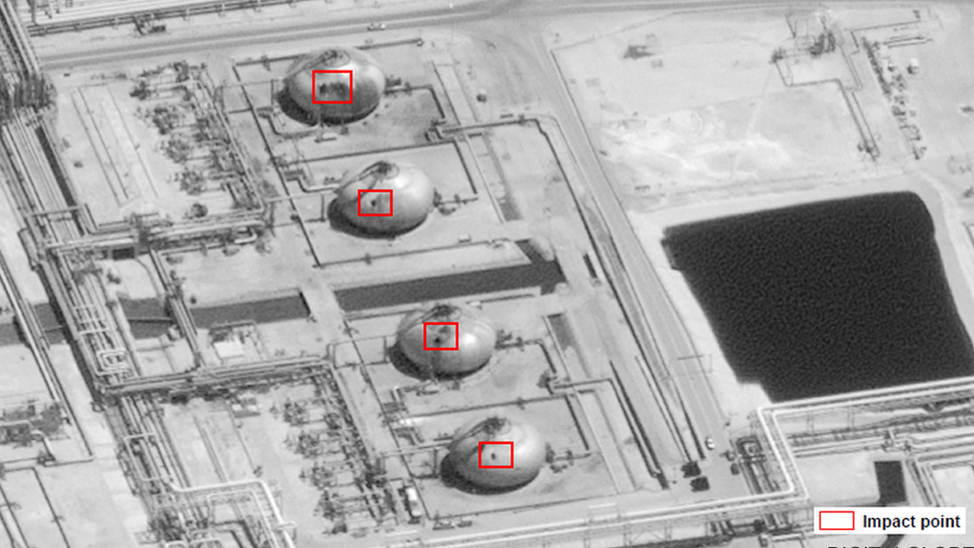
- Published14 September 2019
